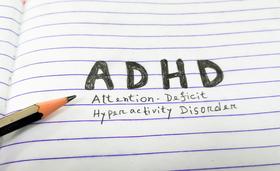The Evolving Role of Interim Assessments
Let's talk about school tests. Remember those pop quizzes, final exams, and everything in between?
- Today, I'd like to introduce you to a type of assessment you may need to learn about - interim assessments.
- In an ever-evolving education landscape, these play a crucial role.
Canva generated this picture of a teacher with her students.

Understanding Interim Assessments
Interim assessments are like temperature checks for learning.
They happen a few times throughout the school year, helping teachers gauge where students are in their learning process.
Unlike the pop quizzes that check daily learning or the end-of-year exams that measure what a student has learned, interim assessments sit snugly in between. These can be benchmarks to compare student learning against standards, diagnostics to pinpoint specific gaps, or progress monitoring tests to see how well a student is advancing in their learning journey.
Interim assessments are a type of educational assessment that is conducted at specific points during the school year to gauge students’ progress and provide feedback to teachers and administrators. Source: TAO
The Importance of Interim Assessments
Think of your child's learning journey as a road trip.
- You wouldn't want to drive across the country without a GPS or roadmap, right?
- Interim assessments are like GPS, providing regular updates on where the students are.
- They help teachers navigate the teaching process more effectively.
- They allow teachers to adapt their instruction to meet your child's needs.
- As a parent, they give you a more nuanced understanding of your child's progress beyond the report cards and parent-teacher meetings.
This video shows the approach to planning interim assessment tests that the Connecticut Department of Education takes.
Case Studies
For instance, let's look at an elementary school in Florida that implemented interim assessments.
- Teachers identified that students struggled with specific math concepts earlier in the year.
- They adjusted their instruction and provided additional resources, and student performance significantly improved by the end of the year.
- There were challenges; it took time to understand the assessment results and adjust the instruction.
- However, the teachers persisted and attended workshops, and ultimately, the students benefited.
Critiques and Misunderstandings of Interim Assessments
The road can be smoother, but there are bumps along the way.
- Critics argue that these assessments pressure students and teachers, leading to 'teaching to the test'.
- Some fear that there's too much testing happening already.
- But here's the thing: Interim assessments are not high-stakes tests.
- They are not about passing or failing but rather about checking how learning is going.
- When used correctly, they guide instruction rather than dictate it.
The Role of Technology in Interim Assessments
Technology has made our lives easier in many ways and revolutionized interim assessments.
- Online tools now allow tests to be more interactive, engaging, and less intimidating.
- Advanced technologies like Artificial Intelligence (AI) can customize assessments to each child's learning level.
- Plus, the results come faster, allowing teachers to take action quickly.
This video offers another explanation of what interim assessments are.
Strategies for Implementing Effective Interim Assessments
The key to reaping the benefits of interim assessments lies in their effective implementation.
- This includes thoughtful planning, ensuring that tests align with the curriculum, and using the results to inform instruction.
- Professional development for teachers is vital.
- They need to understand the what, why, and how of these assessments to use them effectively.
Policy Recommendations
Policymakers can make interim assessments more effective by providing support and resources for schools.
- This includes funding for assessment tools and teacher training.
- They can also encourage research into new ways of making assessments more effective and less stressful for students.
Conclusion
In conclusion, interim assessments are a powerful tool in the modern K-12 education system.
- They're a bit like regular health check-ups: they help spot potential issues early and adjust the course to ensure healthy learning.
- It's time we, as parents, understand and appreciate their importance in helping our children learn better.
Elevate Your Teaching with Interim Assessments
Discover how interim assessments can transform your teaching practice by providing real-time insights into student progress. Learn how to leverage these assessments to tailor your instruction, address learning gaps, and enhance student outcomes.
Take Action Today:
- Explore Strategies for implementing effective interim assessments in your classroom.
- Learn from Case Studies where teachers have successfully used interim assessments to improve student performance.
- Stay Updated on the latest technologies and methodologies in interim assessment.
Visit PublicSchoolReview.com to enhance your teaching toolkit and drive student success.
Questions? Contact us on Facebook, Instagram, and YouTube. @publicschoolreview
#InterimAssessments #EducationEvolution #StudentLearning #ParentalGuide #EdTech #publicschools















